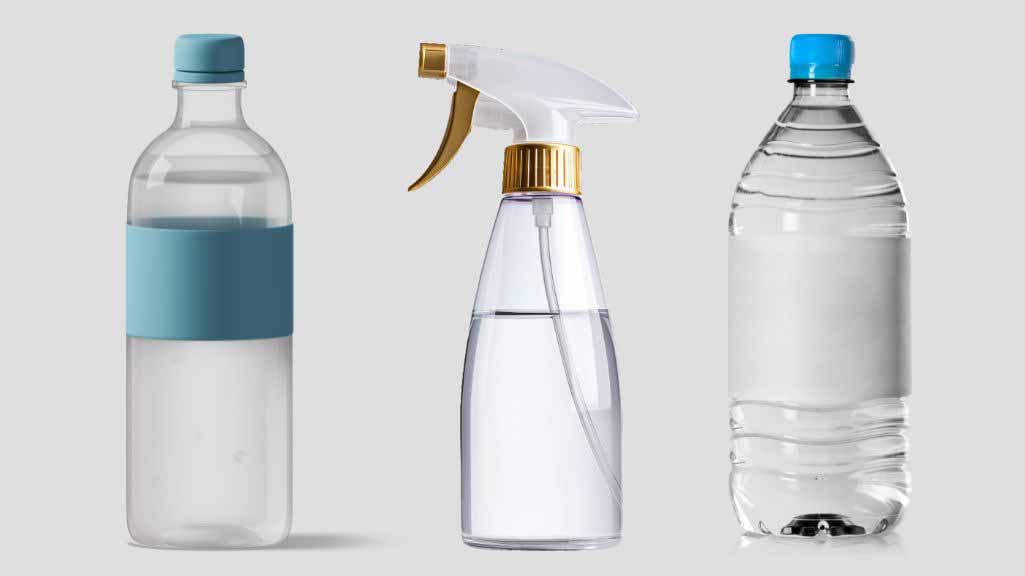An unexpected soapy taste can ruin a refreshing sip of water you’re about to take after a long, hectic day. Plastic water bottles are more prone to this issue. So, how to remove soap taste from plastic water bottles?
To remove the soap taste from a plastic water bottle, you can use the boiling water technique, baking soda method, charcoal method, vinegar method, and so on. Yes, there are multiple ways you can follow to get rid of that weird, soapy taste from your plastic water bottle.
Read on to learn more about the procedures. We will also share some tips to avoid this issue in the future.
What Causes Soapy Taste In Your Plastic Water Bottle?
Soap taste commonly happens because of the nature of plastic. Since plastic is porous, it absorbs and retains strong scents and tastes, including soap. When you wash your bottle with soap, small soap particles can get stuck in these pores. Rinsing is sometimes not enough to remove all of the soap particles, leading to a soapy taste.
Using soaps that are too strong is another reason for this issue. The strong fragrances and chemicals are harder to rinse off completely, which can cause the soapy taste later.
What else can result in a water bottle’s soapy taste?
If you leave your bottle soaking in soapy water for too long, it absorbs more soap and leads to a retained soap taste.
How To Remove Soap Taste From Plastic Water Bottle
Several effective methods can remove that soapy taste from your plastic water bottle. Here are some of the best:
The Boiling Water Method
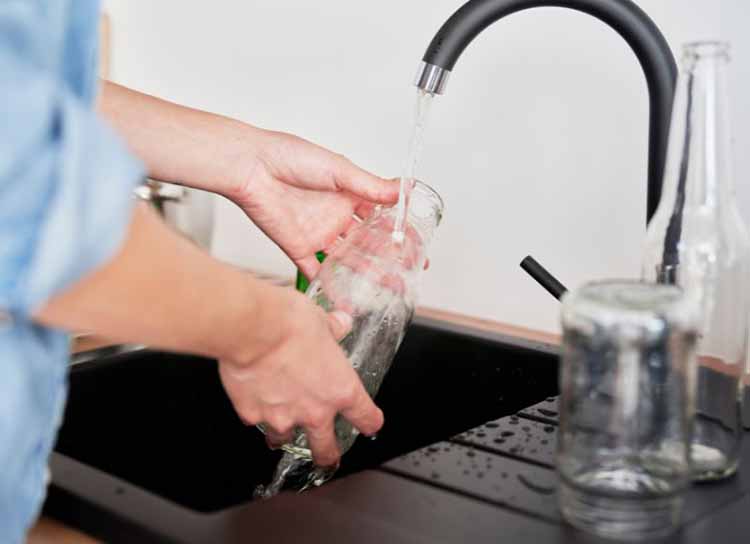
Materials: Boiling water
- Fill your water bottle with boiling water.
- Let it sit for 5-10 minutes. The hot water will loosen and melt the soap residue.
- Carefully empty the water and rinse thoroughly with cold water.
Note: Be careful while handling boiling water to avoid burns. This method may not be suitable for all plastic types, so check your bottle’s heat resistance guidelines.
Baking Soda Method
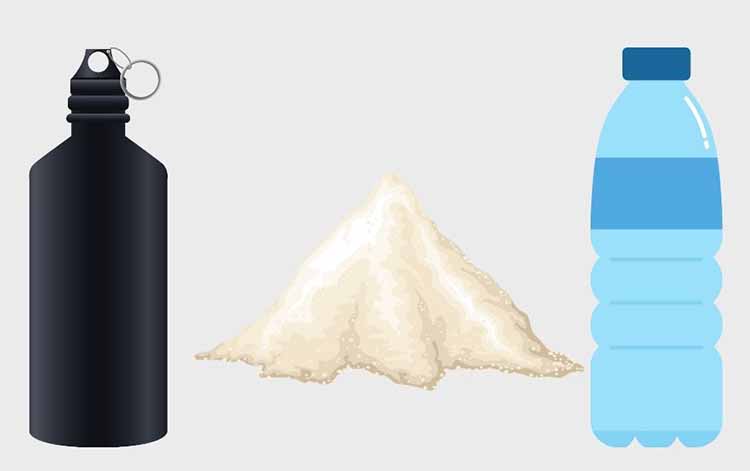
Materials: Baking soda, water
- Make a paste of baking soda (2-3 tablespoons) and a little water.
- Apply the paste to the inside of your bottle, including the lid and crevices.
- Let it sit for a few hours or overnight.
- Rinse thoroughly with warm water to remove all baking soda residue.
Note: Baking soda might leave a slightly chalky aftertaste if not rinsed well.
Using Vinegar
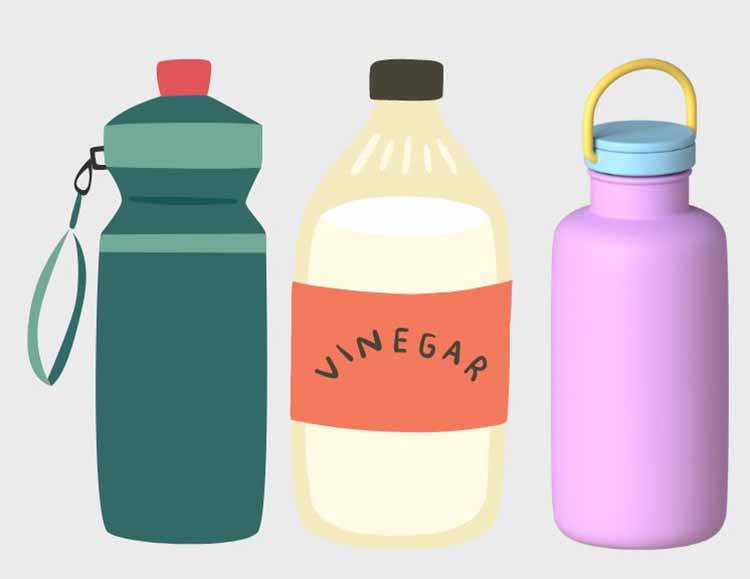
Materials: White vinegar, water
- Mix equal parts white vinegar and water in your bottle.
- Let the solution sit for a few hours or overnight. The vinegar’s acidity helps neutralize soap residue.
- Rinse thoroughly with cold water several times.
Note: Vinegar has a strong odor. Be sure to rinse thoroughly to avoid a lingering vinegar taste.
Lemon Juice Rinse Technique
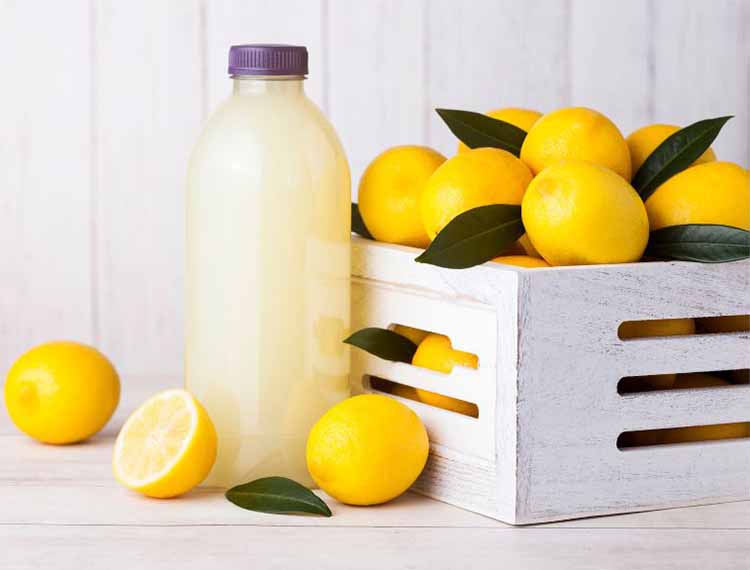
Materials: Lemon juice, water
- Mix a tablespoon of lemon juice with water in your bottle.
- Let it sit for 30 minutes to an hour. Lemon juice, like vinegar, can help break down soap residue.
- Rinse thoroughly with cold water to remove any lemon aftertaste.
Note: This method may not suit all plastics, as lemon juice has acidic properties. Check your bottle’s material information beforehand.
Coffee Grounds Technique
Materials: Used or fresh coffee grounds
- Add a spoonful of used or fresh coffee grounds to your water bottle.
- Secure the lid and shake the bottle well. It will help distribute the coffee grounds.
- Let it sit for at least 6 to 10 hours, or you can wait overnight for better results.
- Take out the grounds and rinse thoroughly with cold water.
Note: Remove all coffee grounds to avoid clogging the nozzle or cap. Leftover grounds can be difficult to clean.
The Hydrogen Peroxide Method
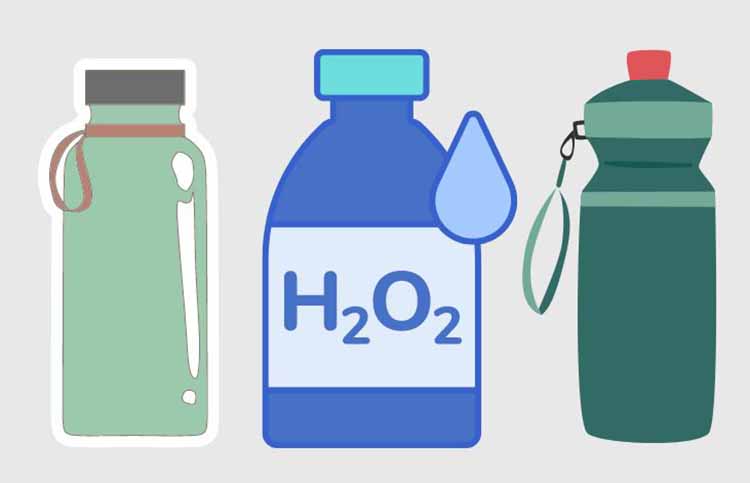
Materials: Hydrogen peroxide (3%), water, bottle brush, dish soap (optional)
- Dilute one tablespoon of 3% hydrogen peroxide with water in your bottle.
- You can add a small amount of dish soap to enhance the solution’s cleaning power.
- Let the solution sit for 15-30 minutes. Hydrogen peroxide disinfects and can remove some soap taste.
- Rinse thoroughly with cold water several times, as hydrogen peroxide can taste metallic.
Note: Hydrogen peroxide can break down some plastics over time. Use this method occasionally and only as a last resort.
Denture Tablet Technique
Materials: Denture cleaning tablet
- Fill the water bottle with warm water and drop a denture cleaning tablet in it.
- Let the solution fizz for an hour or more. These tablets can help remove stains and some soap residue.
- Rinse thoroughly with cold water to remove any residual cleanser. Dry the bottle before use.
Note: Not all denture tablets are safe for plastic water bottles. Check the tablet instructions and ensure they’re suitable for this use. And, rinse out all tablet residues to prevent an aftertaste from the tablets. Denture tablets may leave a slight chemical taste if you don’t rinse properly.
Using Dish Soap For Routine Cleaning
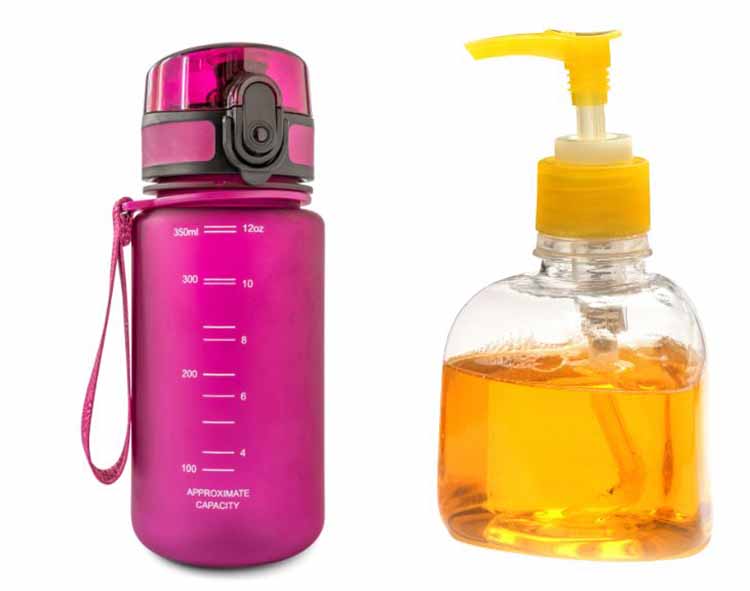
Materials: Mild dish soap, water, cleaning brush
- Use a small amount of mild dish soap diluted with warm water to wash your bottle regularly.
- Scrub inside the bottle with a brush, or you can use a sponge instead. Make sure you give enough attention to the bottom and the area around the mouth.
- Rinse thoroughly with warm water several times to remove all soap residue. This prevents build-up that can cause a soapy taste.
- Air dry the bottle before using it again.
Note: Using too much soap or not rinsing thoroughly can make it harder to rinse out completely and create the soapy taste you’re trying to avoid.
Activated Charcoal Method
Materials: Activated charcoal capsules, water
- Open an activated charcoal capsule and pour the powder into your water bottle.
- Fill the bottle with water, secure the lid, and let the mixture sit for a few hours. Activated charcoal absorbs odors and impurities, including soap residue.
- Rinse thoroughly with cold water to remove any charcoal residue.
Note: Rinse out all charcoal particles completely, as they can leave a light-colord stain or a gritty texture in the bottle.
Minty Fresh Rinse Method
Materials: Mint leaves, water
- First off, wash the empty bottle thoroughly with water (warm) and mild dish soap. Rinse a couple of times to remove any soap residue.
- This time, we will make a ministry fresh solution. To do so, get a few fresh mint leaves and soak them in boiling water. Set aside the mixture and allow it to cool down to room temperature.
- Once the mint solution is ready, pour it into the cleaned water bottle. Pour it in a way so that the solution is distributed to all inner surfaces. Screw the lid and give the bottle a few shakes.
- Let the solution sit for at least 30 minutes. Then, take out the solution and rinse the bottle with fresh water.
Note: This method might not work for extremely soapy taste. It works better as a final touch after cleaning with other methods.
How to Prevent Water Bottle Soap Taste in The Future
You already know a lot about removing the soapy taste from plastic water bottles. But here’s how you can avoid this in the future.
Choose an Appropriate Water Bottle
Select a high-quality water bottle made from materials that are less likely to absorb odors and tastes.
For example stainless steel or BPA-free plastic. Bottles with wide mouths are easier to clean thoroughly. Check that the bottle is dishwasher safe for convenient cleaning.
Here’s a quick comparison between the water bottle materials and their proneness to retaining soap taste:
| Bottle Material | Proneness to Retaining Soap Taste | Suggested Cleaning Methods | Bonus Tips |
| Stainless Steel Material | Low | Safe for dishwashers | Thorough rinsing after cleaning is a must |
| Aluminium | Medium | Hand wash with mild detergent | Do not use abrasive cleaners that can damage the material |
| Plastic | Medium | Rinsing with hot water, using a vinegar solution | Avoid using cleansers that have strong fragrances |
| Tritan | Low | Safe for dishwashers | Avoid high heat settings |
| Glass | Low | Hand wash with mild detergent | Use a bottle brush for thorough cleaning |
Follow Proper Washing Techniques
Always rinse your water bottle thoroughly after washing with soap. It’s important to leave no residue. Use a bottle brush to reach all areas (e.g. the bottom and the cap). Rinse multiple times with fresh water until all soap traces are gone.
Try not to soak the bottle in soapy water for extended periods.
Choosing the Right Cleaning Agents
Use mild, scent-free dish soap to clean your water bottle. Strongly scented or harsh soaps can leave a lingering taste that is difficult to remove. Occasionally, clean with natural alternatives like vinegar, baking soda, or lemon juice. It will ensure that any remaining soap taste is neutralized.
Avoid Long Soaking Times
Do not soak your water bottle in soapy water for too long periods. Long soaking times can cause the plastic to absorb the soap and make it difficult to rinse out.
Air Dry Completely
After washing and rinsing, allow your water bottle to air dry completely before using it again. Place it upside down on a clean towel or dish rack. It will help drain out all the moisture. Proper drying helps prevent the growth of bacteria and mold, which can also affect the taste.
FAQs
Is It Safe to Use Lemon Juice to Clean A Water Bottle?
Yes, it is safe to use lemon juice to clean your water bottle. Lemon juice is a natural cleaner. It helps remove the soap taste and leaves a fresh scent. Mix lemon juice with water, fill the bottle, and let it sit for a while. Then, rinse thoroughly with clean water. This method is safe and effective for keeping your bottle fresh.
What Happens If You Drink Water That Tastes Like Soap?
Drinking water that tastes like soap will not do any harm, but it can be unpleasant. The soapy taste comes from leftover soap residue in the bottle. It may cause you to have mild stomach discomfort or nausea.
Wrapping Up
So, that’s all about how to remove soap taste from plastic water bottles. Now, you know that there are different approaches to removing the soapy taste from your plastic water bottle.
You can use vinegar solution, baking soda, lemon juice, charcoal, or such cleansing materials to get rid of the weird taste. To clean and maintain a plastic water bottle regularly, use mild, scent-free soap that cleans properly without damaging the material of your bottle.

